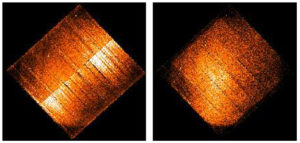XMM-Newton Large Program: magnetism of old suns
I’m very excited these days because the first observation from my recently awarded XMM-Newton large observing program keeps getting scheduled and then re-scheduled by the XMM team. If all goes well, the first data will be collected before the end of June. The observing program is about the magnetism of old sun-like stars; specifically, my co-investigators and I want to figure out if there is still a magnetic braking mechanism operating in old stars that are rotating anomalously quickly. The existence of these stars has made quite a splash in the community back in 2016 with Jen van Saders’ Nature paper; then, a lot of people argued if selection effects cause this result versus a true anomalous spin-down. Initially, I also thought that this is likely a selection effect: namely, in order to detect rotation in light curves, we need starspots, but the rotation of our own Sun would be very hard to detect in Kepler-style light curves. Meaning that old stars with well-detected rotation periods might have to be the ones that have prominent starspots, caused by fast rotation; i.e., we’re just sampling a tail of the natural distribution. However, what changed my mind was the paper by Oliver Hall et al. in 2021, who used asteroseismic rotation periods instead of starspot-driven ones, and they found the same result!

This was on my mind a lot last summer, when I took 4 weeks of summer vacation, but after 2 weeks I just had to do some back-of-the-envelope scribbles about this because it was too interesting. In the fall I then prepared the XMM proposal, because my scribbles had the result that the lowest X-ray energies observable with XMM should be able to tell us whether there is still a normal corona for those anomalously fast rotators, or whether their magnetic dynamo has completely collapsed. It’s also quite interesting on the technical side, because we will have to use photon energies below 200 eV, where the XMM data needs some boutique data calibration techniques that are not included in the standard reduction pipeline, but they are fortunately described in a proceeding by Konrad Dennerl from 2004. This stuff is really up my alley!
I’m also pretty hyped that this project is my first XMM Large Program as a PI. Sometimes you write a proposal because you think “I might as well give this a shot”, but this one was of the type “I really think there’s a unique idea in this”. Makes me happy that the reviewers liked this one!